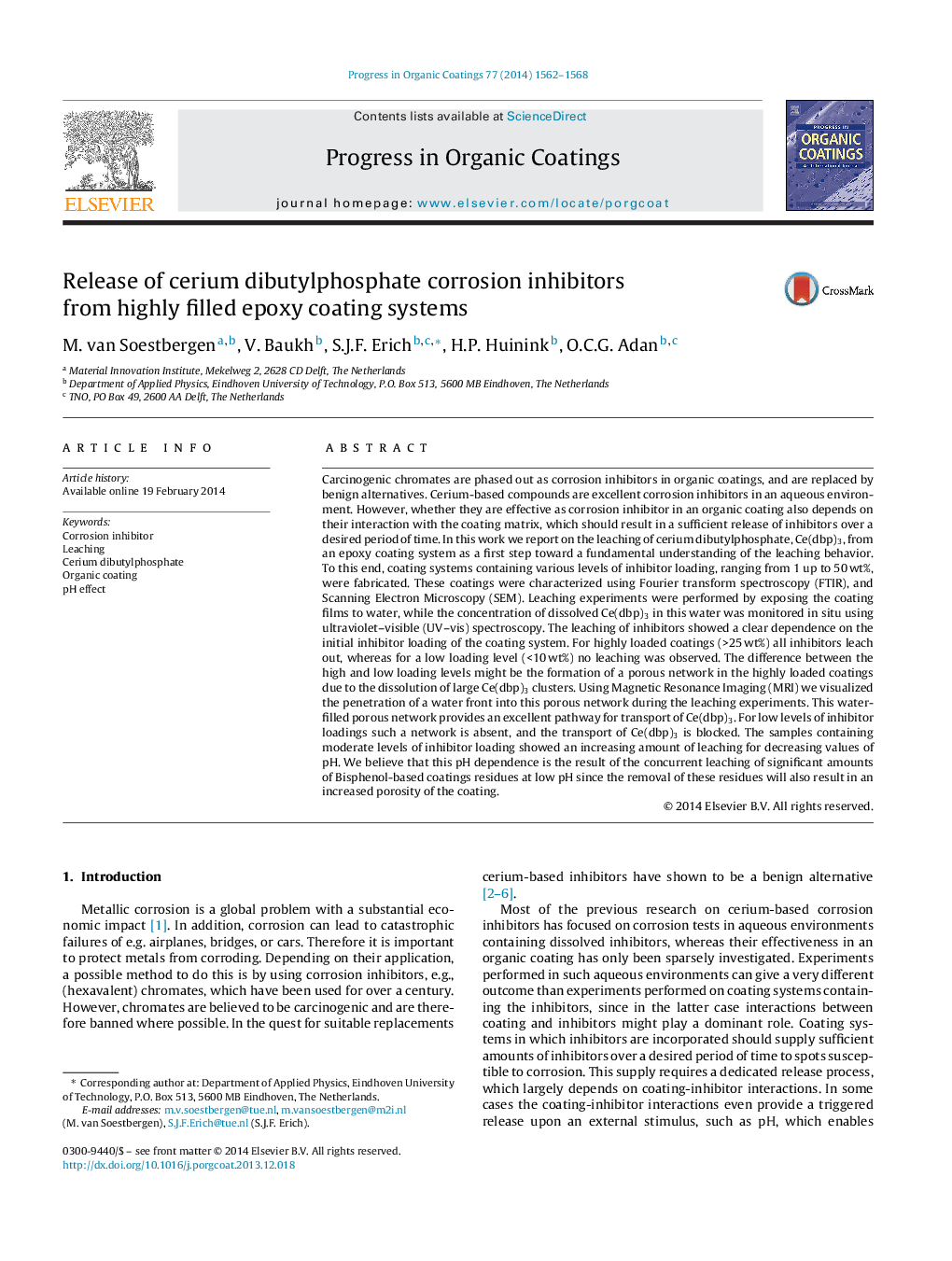| Article ID | Journal | Published Year | Pages | File Type |
|---|---|---|---|---|
| 692537 | Progress in Organic Coatings | 2014 | 7 Pages |
Carcinogenic chromates are phased out as corrosion inhibitors in organic coatings, and are replaced by benign alternatives. Cerium-based compounds are excellent corrosion inhibitors in an aqueous environment. However, whether they are effective as corrosion inhibitor in an organic coating also depends on their interaction with the coating matrix, which should result in a sufficient release of inhibitors over a desired period of time. In this work we report on the leaching of cerium dibutylphosphate, Ce(dbp)3, from an epoxy coating system as a first step toward a fundamental understanding of the leaching behavior. To this end, coating systems containing various levels of inhibitor loading, ranging from 1 up to 50 wt%, were fabricated. These coatings were characterized using Fourier transform spectroscopy (FTIR), and Scanning Electron Microscopy (SEM). Leaching experiments were performed by exposing the coating films to water, while the concentration of dissolved Ce(dbp)3 in this water was monitored in situ using ultraviolet–visible (UV–vis) spectroscopy. The leaching of inhibitors showed a clear dependence on the initial inhibitor loading of the coating system. For highly loaded coatings (>25 wt%) all inhibitors leach out, whereas for a low loading level (<10 wt%) no leaching was observed. The difference between the high and low loading levels might be the formation of a porous network in the highly loaded coatings due to the dissolution of large Ce(dbp)3 clusters. Using Magnetic Resonance Imaging (MRI) we visualized the penetration of a water front into this porous network during the leaching experiments. This water-filled porous network provides an excellent pathway for transport of Ce(dbp)3. For low levels of inhibitor loadings such a network is absent, and the transport of Ce(dbp)3 is blocked. The samples containing moderate levels of inhibitor loading showed an increasing amount of leaching for decreasing values of pH. We believe that this pH dependence is the result of the concurrent leaching of significant amounts of Bisphenol-based coatings residues at low pH since the removal of these residues will also result in an increased porosity of the coating.
